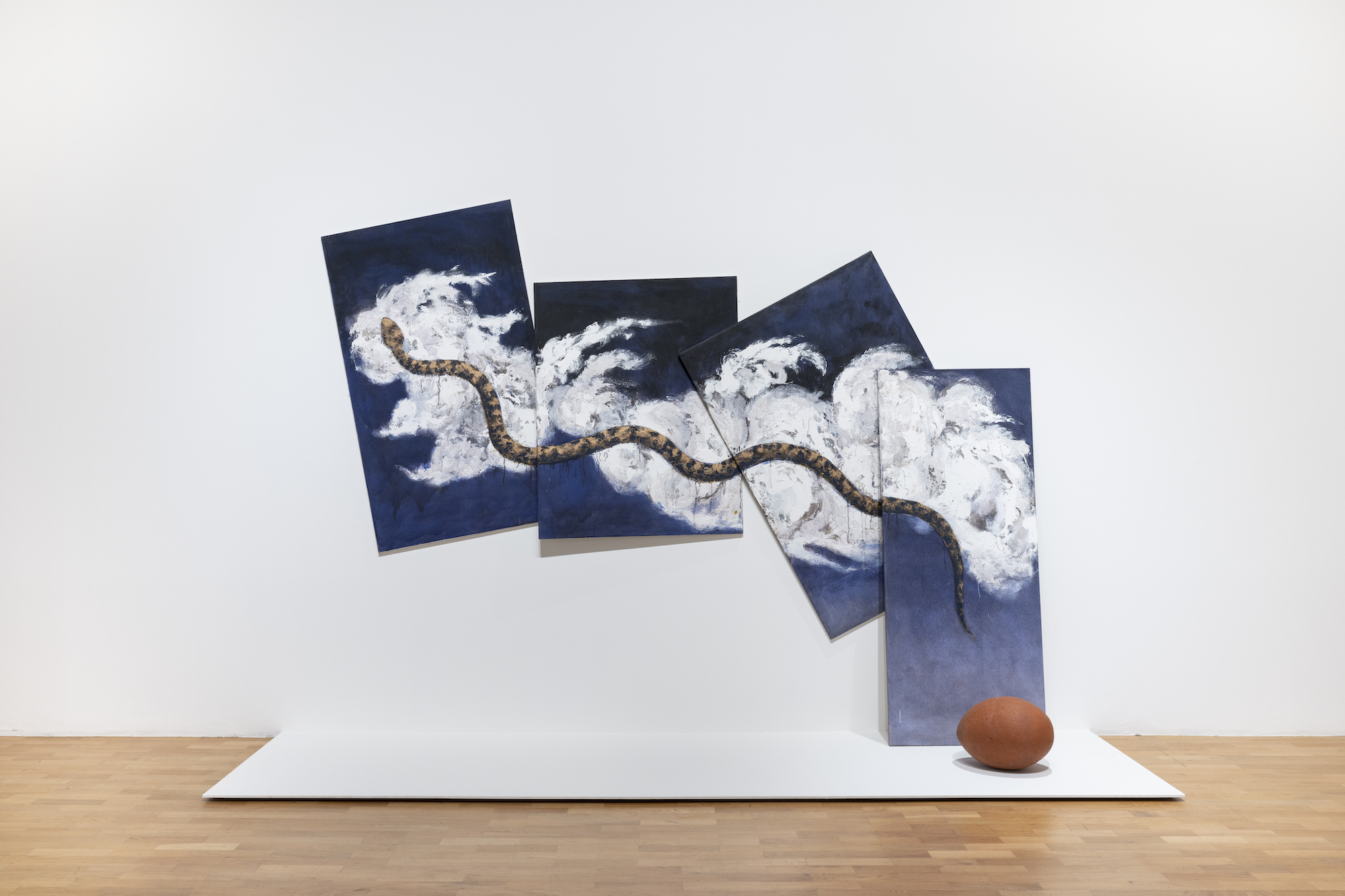LONDON — In 1973, artist Gavin Jantjes was forced into exile for criticizing the White regime perpetrating Apartheid in South Africa. Since then, he has worked from afar to shed light on the Black struggle for equality through his printmaking, painting, and curating. To Be Free! A Retrospective 1970 – 2023 at Whitechapel Gallery delves into five decades of his poetic, allegorical, and bitingly political practice.
This show centers on Jantjes’s Korabra (1986) and Zulu (1986–90) series, two distinct groups of large paintings that are rarely seen together, scattered as they are across institutional collections. While the artist’s earliest paintings are figurative and contain clear anti-Apartheid messages, these two series take a more holistic approach to political protest that demands an imaginative, haptic, and material engagement with issues of colonialism, racism, and oppression.
Each scene in the Korabra series is set in a symbolic landscape punctuated by surreal details, such as an ocean dotted with sailboats made of coffins, or a guitar falling from the sky onto a field of graves. In these works, Jantjes creates textured or appliquéd surfaces by blending paint with media such as sugar and cotton — materials with histories entwined in the transatlantic slave trade. The tactility of the works grounds the dreamlike strangeness of the imagery, yoking a poetic sensibility to the realities of injustice.

The Zulu series looks further from home. In that language, “Zulu” literally means “the space above your head.” Jantjes uses that translation as an entry point to explore alternative ways of imagining the cosmos through a range of African belief systems. For example, an untitled work from 1989 draws on the mythological imagery of the Indigenous Khoisan people of South Africa. An image of a snake unfolds across four canvases, conjoined at haphazard angles. Resting on the floor beside the snake’s tail is a large ceramic egg, alluding to creation myths and the myriad channels of connection between heaven and earth that exist outside Eurocentric belief systems. For instance, according to one Khoisan myth, a girl dancing around a fire threw a handful of embers into the sky, where they became the Milky Way.
While these paintings are impactful in their poeticism, the most compelling section of the exhibition is a gallery that showcases Jantjes’s acerbic critique via screenprints he made in the 1970s. The series A South African Coloring Book (1975), for instance, combines hand-drawn images with news cuttings and journalistic photographs to undercut the false narratives used to justify Apartheid.
In the 1990s and 2000s, Jantjes took a significant break from art-making in order to focus on championing the work of other Black artists in institutions across the United Kingdom, Germany, and Norway as a curator. When he returned to painting in 2017, his canvases bore little relation to his earlier work. In fact, walking from that room of screenprints to the final rooms of To Be Free! is disconcerting, like stepping into a completely different exhibition. These large-scale abstract paintings are light, bright, and free; their smooth, flat surfaces contrast with his textured earlier works. In that previous gallery, a quote by Jantjes printed on the wall explains how he felt a “need to cry rage, yet simultaneously wanted a voice that could sing a visual song for and of Black people.” That sense of rage seems absent from these ascendant, harmonious works. They continue to sing that visual song — but one in a different, softer key.

Gavin Jantjes: To Be Free! A Retrospective (1970–2023) continues at Whitechapel Gallery (77-82 Whitechapel High Street, London), through September 1. The exhibition was organized by Salah M. Hassan with Gilane Tawadros and Cameron Foote.

